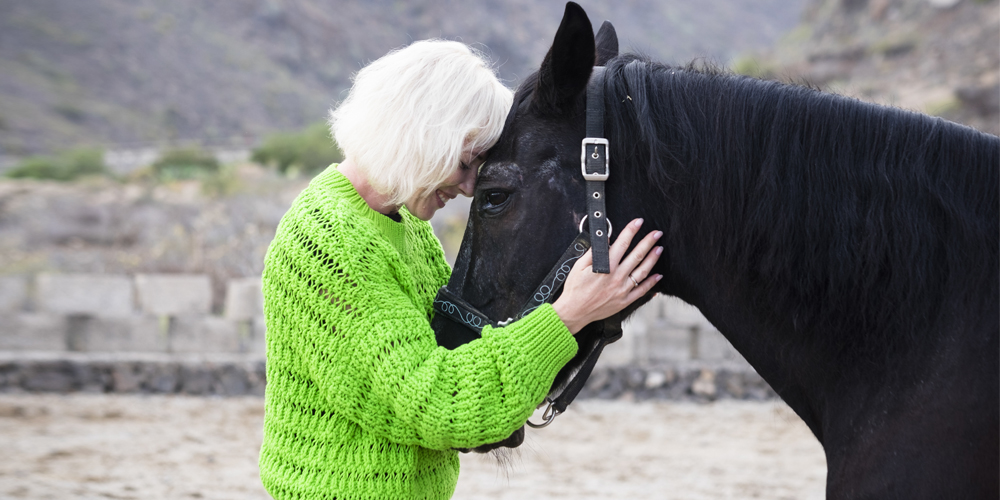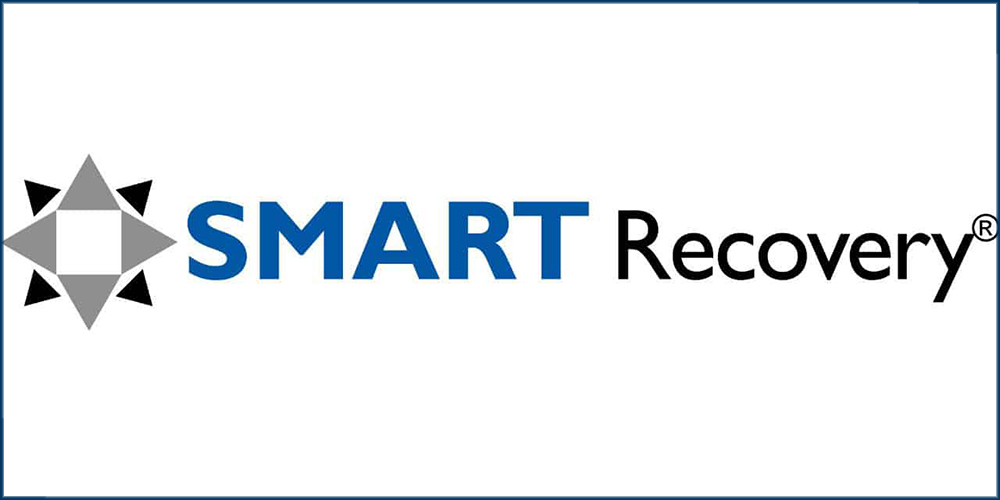Animal-Assisted Therapy
In recent years, animal-assisted therapy has grown in popularity. It can be used to treat a variety of mental health conditions, and it’s become a common complement to traditional substance use disorder treatment.
Interaction with animals is associated with several health benefits in humans. Studies have shown that owning a pet can change the body’s stress response, including blood pressure response in stressful situations. Owning a pet is also associated with lower cholesterol and increased physical activity. There may also be an association between pet ownership and lower rates of obesity.
Owning a pet, working with a service animal or visiting therapy animals can provide mental health benefits, but those scenarios aren’t considered animal-assisted therapy.
“Animal-assisted therapy, which the industry refers to as animal-assisted interventions, is actually an umbrella term that houses multiple therapeutic, education or recreational activities,” Leslie Stewart, an assistant professor of counseling at Idaho State University, told DrugRehab.com.
Stewart helped develop the American Counseling Association’s competencies for conducting animal-assisted therapy and has facilitated animal-human interactions for 12 years.
“Animal-assisted therapy is a greatly misused and misunderstood term both in the industry and in the public,” Stewart said. “To truly be animal-assisted therapy, it’s got to be a goal-directed intervention that’s directly tied to a client’s treatment plan. And it has to be conducted by a provider who is appropriately trained or certified in their health care human services profession.”
Licensed physicians, therapists, nurses or social workers can conduct animal-assisted therapy after receiving specialized training. The animal involved in the therapy should also receive training and meet several standards to ensure the safety and effectiveness of the therapy.
Numerous types of animals can be used during animal-assisted therapy.
- Dogs
- Cats
- Guinea Pigs
- Horses
- Pigs
- Rabbits
- Llamas and alpacas
- Birds
- Pigs
- Rats
Dogs are the most common animals involved in animal-assisted therapy. Equine therapy, in which clients interact with horses, is also common during substance abuse treatment. Researchers haven’t compared therapies with different animals to determine if one animal is more effective than another. The effectiveness of any approved animal therapy is believed to be similar.
Benefits of Animal-Assisted Therapy for Addiction
Animal-assisted therapy for substance use disorders hasn’t been studied as much as AAT for other mental health conditions. Published studies involving people with addiction show that the therapy seems to strengthen the “therapeutic alliance,” a term referring to the relationship between a patient and his or her therapist.
“Animal-assisted therapy in all of its forms, whether we’re talking about equine, canine, et cetera, does tend to improve the client’s perception of their relationship with their provider,” Stewart said. “That’s particularly important because the client’s perception of the working relationship with the provider is the No. 1 predictor of positive outcomes in any kind of psychotherapy.”
Many clients with substance use disorders leave treatment too soon. A strong therapeutic alliance makes patients more likely to continue treatment and benefit from therapy. The presence of an animal during therapy is believed to enhance the therapeutic alliance and to reduce anxiety during treatment.
“Animals can really serve as a model for mindfulness about experiencing emotions in real time.” — LESLIE STEWART
“I think the therapeutic alliance is absolutely critical, especially with substance abuse and trauma,” Stewart said. “For folks who identify in those populations, it can be even more challenging to develop a relationship with the provider.”
Animal-assisted therapy can also aid in other aspects of recovery. Several studies have found evidence that it can improve mood, boost confidence and bolster social and communication skills.
“With substance use disorders and trauma disorders, there is a lot of emotional dysregulation or discomfort with experiencing and processing emotions,” Stewart said. “Animals can really serve as a model for mindfulness about experiencing emotions in real time.
They can educate us about the purpose of emotions, and they can almost serve as a model as someone is relearning how to navigate the world of an emotional being.”
Animal-assisted therapy shouldn’t take the place of standard components of effective addiction treatment. Addiction treatment should include supervised detox, counseling and therapy, and aftercare support. AAT should be an auxiliary component that increases the effectiveness of counseling and therapy.
Equine Therapy for Addiction
Equine therapy has grown in popularity in addiction treatment, and it’s one of the most heavily researched animal-assisted treatments for substance use disorders. Studies support the use of equine therapy for several mental illnesses.
- Choosing a horse
- Horse grooming
- Mounted work
- Walking/trotting
- Lunging
- Equine games
The therapy can be combined with other evidence-based therapies, such as cognitive behavioral therapy or experiential therapy. Aspects of therapy often include role-playing or role-reversal.
“I do think that working with horses offers an additional skill-building element,” Stewart said. “There are a lot of competencies that go into being able to work with a horse. Only a small percentage of that is actually riding a horse.
You have a lot of skill building opportunities with a horse that don’t present themselves as easily with dogs, rabbits and other species.”
In a small study, individuals receiving substance abuse treatment described how they felt about equine therapy. One described it as a very positive experience. Another individual said it was “much of the reason why I’m still here [in treatment].” A third participant said, “It’s very good motivation to think ahead in my life.”
The statements were representative of themes that arose among eight participants. The study was published in 2016 in Substance Abuse: Research and Treatment.
Effects of Animal-Assisted Therapy on Co-Occurring Disorders
Almost two-thirds of people with substance use disorders also have a co-occurring mental illness, according to the National Institute on Drug Abuse.
A large portion of people struggling with substance abuse have histories of trauma or abuse. When conducted properly, animal-assisted therapy may be able to help those individuals in ways that therapists can’t.
“With folks who have survived trauma, there are certain physical aspects of engaging with an animal that wouldn’t be possible without the inclusion of the animal,” Stewart said. “An aspect of animal-assisted therapy that I have utilized heavily in my work with sexual assault survivors is reorienting the survivor to healthy, mutually beneficial, nonsexual touch.”
Animal-assisted therapy may also reduce anxiety, sadness and insecurity. Anxiety and mood disorders commonly co-occur alongside substance use disorders. When implemented in a comprehensive treatment plan that addresses all of the underlying causes of addiction, animal-assisted therapy may improve recovery outcomes.
Looking for addiction treatment?We have programs designed specifically for you.
Who Conducts Animal-Assisted Therapy?
Any type of mental health therapy should be conducted by a person with a reputable degree in a field related to mental health. But having a master’s or doctorate degree in counseling or addiction doesn’t necessarily qualify someone to conduct animal-assisted therapy.
“The enthusiasm about [animal-assisted therapy] is growing faster than the provider or facility competence,” Stewart said. “If you don’t get a provider who is appropriately trained, appropriately competent — and if the welfare of the animal isn’t ensured to a certain standard — it can actually cause harm.”
In general, therapists should be trained and licensed in a specific mental health field and go on to receive further training in animal-assisted therapy.
- Nurses
- Therapists
- Counselors
- Social workers
- Psychologists
- Physicians
Animals should also receive obedience training and preparation for animal-assisted interventions. Some organizations test an animal’s well-being and temperament to ensure that animal-assisted therapy is appropriate for it.
Orientation to Animal-Assisted Therapy
Clients must agree to participate in animal-assisted therapy. No one should be forced or deceived into participating. Before the therapy begins, clients go through an orientation process.
“In all orientations, the client should learn a little bit about the species’s specific body language,” Stewart said. “Horses communicate through body language that looks certain ways. Dogs do the same thing but in different ways. [Clients] should understand behaviors and interactions that are appropriate for the animals.”
- Petting
- Brushing
- Positive obedience training
- Playing fetch
- Restraining hugs
- Provoking
- Intimidating
- Striking
Clients should also learn about which parts of the animal are appropriate to touch. They have to understand that animals aren’t always open to being involved in therapy.
“Just as the client has a choice, so does the animal,” Stewart said. “The animal might choose one day that it doesn’t want to interact. We’re going to respect the animal’s right to choose.”
What to Look for in an Animal-Assisted Therapy Provider
When looking for any substance use treatment facility, clients should look for licensing and accreditation. Rehab facilities must be licensed by the state to treat substance use disorders.
The best treatment providers also have accreditations that indicate they meet standards of quality care. Organizations such as the Joint Commission and the Commission on Accreditation of Rehabilitation Facilities provide reputable accreditations.
In addition to licenses and accreditations for substance abuse treatment, potential clients can ask about certifications and registrations for animal-assisted therapy. EAGALA and PATH International provide reputable accreditations for equine therapy, and Pet Partners and Therapy Dogs International register therapy dogs.
“Potential clients should know where to look to evaluate their provider’s competence,” Stewart said. “I think the American Counseling Association’s competencies are a good start.”
If a provider is competent in animal-assisted therapy, they should be able to answer the following questions:
- How are the animals cared for?
- What constitutes the animal’s consent?
- If there is an incident, what is the provider’s plan to keep everyone safe?
- What competencies does the provider possess?
Many rehab facilities don’t have the resources to offer animal-assisted therapy, so clients may travel to farms or other locations to receive the therapy. In those situations, clients should ask about the competencies of the third-party provider.
Who Should Receive Animal-Assisted Therapy?
Advocates for animal-assisted therapy support using the therapy for a wide range of mental health disorders and types of addiction.
Studies on animal-assisted therapy usually include participants with different types of substance use disorders or addictions to multiple substances. It’s unknown whether the therapy is more or less effective for certain types of drug addiction.
Individuals who may not be appropriate candidates for animal-assisted therapy include those who:
- Dislike animals or are disinterested in working with them
- Have a history of harming animals
- Possess allergies that can’t be treated by over-the-counter medicine
- Have religious or cultural concerns involving animals
“Different cultures have different ideas about human-animal interaction and the roles that humans and animals have in each other’s lives,” Stewart said. “It’s important to understand those before you start incorporating them with a client.”
When conducted by a competent health provider as a part of a comprehensive treatment plan, animal-assisted therapy can help individuals recover from addiction. It can also improve symptoms of other mental health conditions.

Senior Content Writer, DrugRehab.com
Chris Elkins worked as a journalist for three years and was published by multiple newspapers and online publications. Since 2015, he’s written about health-related topics, interviewed addiction experts and authored stories of recovery. Chris has a master’s degree in strategic communication and a graduate certificate in health communication.

Editor, DrugRehab.com

Associate Professor of Counseling, Idaho State University
In recent years, animal-assisted therapy has grown













